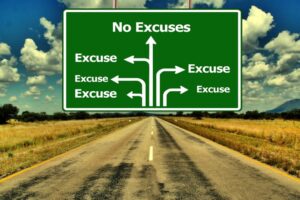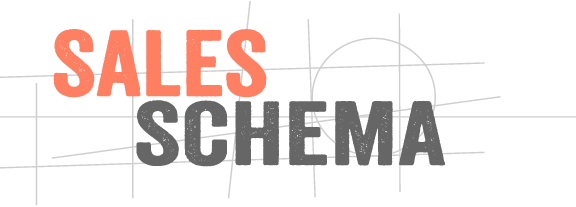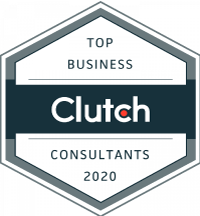If you’re reading this blog, chances are you’re surrounded by case studies on massive revenue growth, awards, lifestyle mastery, and other enviable results.
You might rightfully feel that comparing yourself or your business to others is unhealthy. After all, you don’t know what’s going on under the hood, and as they say, “Sometimes when the grass is greener it’s because it’s fake.” Maybe the company in question optimized for a big revenue increase at the expense of everything else, leading to employee burnout and wrecked relationships. Or maybe the incredible result can be boiled down to a sort of institutional fraud, like when agencies count their clients’ media spends as part of their own top-line revenues.
Perhaps the win was real, and the team managed to keep everything in balance, but they don’t have enough perspective to understand how the result was achieved. Due to complexity, the map is not the territory, and many fail to understand all the variables that lead them to success.
But okay, let’s say that the company in question was successful by their own standards AND has enough perspective to understand how it happened – is their outcome something you actually want or is it something you think you should want?
To steel yourself against shiny objects, many thought leaders remind you that entrepreneurship is a game where you can make your own rules. You set the goalposts, and the way to win is to stop moving them so often, otherwise you will be working to achieve someone else’s dream. This reminder is cathartic, and like refilling a cup of water, it always helps to return to your ‘why’ so you can re-energize your work with meaning.
The bad news, which most business lifestyle thought leaders fail to appreciate:
You can’t avoid comparing yourself to others any more than you can resist the pull of gravity. No matter how much you meditate you will never levitate.
As the late philosopher René Girard argued, this pull toward comparison and hierarchy is known as mimetic rivalry, and it’s basically in our DNA. The book Wanting by Luke Burgis provides a useful primer on Girard, and I built on some of Burgis’ insights here.
The problem with trying to reject or ignore mimetic rivalry is that you end up falling back on old habits and running toward someone else’s dreams over and over again. You get impatient, pivot too quickly, make knee-jerk hires, and engage in other erratic swings.
The good news:
While you can’t completely avoid mimetic rivalry, you can decide which businesses and leaders you will model yourself on. So who should you pick?
To answer this question, most examine business growth stages by way of big, loud, legible metrics like revenue and headcount. The problem is that these numbers share only a loose connection to the health of the business, and more importantly, they don’t tell you if the “successful” organization is a meaningful mimetic model for you.
For example, at Sales Schema over the years we’ve worked with many eight-figure traditional marketing agencies, and many from the outside looking in seem like they “made it.” On candid one-to-one calls, we often went on to learn that many such agencies were just one heartbeat away from massive layoffs and bankruptcy – basically if a single brand-side marketing leader, attached to a gorilla client, got fired, died, or simply woke up on the wrong side of the bed, the agency would be in dire straights.
On the other hand, we know many low-seven and even six-figure agency founders who built organizations that empower their dreams and aspirations. While strategies vary by individual goals, they involve repeatable business development systems, training and nurturing salespeople, and the specializing at a high level.
Based on thousands of conversations and over 100 engagements with agency and B2B service company owners since 2014, below is what we’ve found to be a healthier hierarchy for moving your agency forward, one that’s detached from revenue and headcount. My emphasis is on sales and business development since that’s our area of focus at Sales Schema, but you can broad frame these stages to other business areas.
With that in mind, the first question to answer is, “What do you want and why do you want it?” For example, maybe you want to:
- Scale your organization and disrupt your industry.
- Take 90-day sabbaticals every year.
- Gear up to sell your agency in 24 months.
- Support a social mission or cause.
- Or something else entirely…
A disclaimer – there’s nothing wrong with staying put at any given level, just as long as you’re cool with the downsides. After all, progressing up a level requires focus and determination, just like with everything worthwhile.
Level 1: The Glorified Freelancer
The Glorified Freelancer is a level where an owner is handling most of sales and fulfillment, leaving little time or energy for much else. As accidental business owners, most agency leaders start here.

Even if there is a team in place, the organization mirrors the owner, who thinks and acts like a mercenary artisan. They work on big projects, come up for air, and scramble to win the next new client via unpredictable referrals.
There’s nothing wrong with being an artisan if you love the work and you’re cool with the downside, which is facing the reality that you’re building something that can’t scale or be sold.
The path out of Level 1, if that’s what you want, in about self-reflection and courage. This means building the fortitude to go from artisan to leader.
Level 2: The Meanderer
This Meanderer describes more 50% of the agencies and B2B service companies we encounter and work with, even those at seven and eight-figure levels.
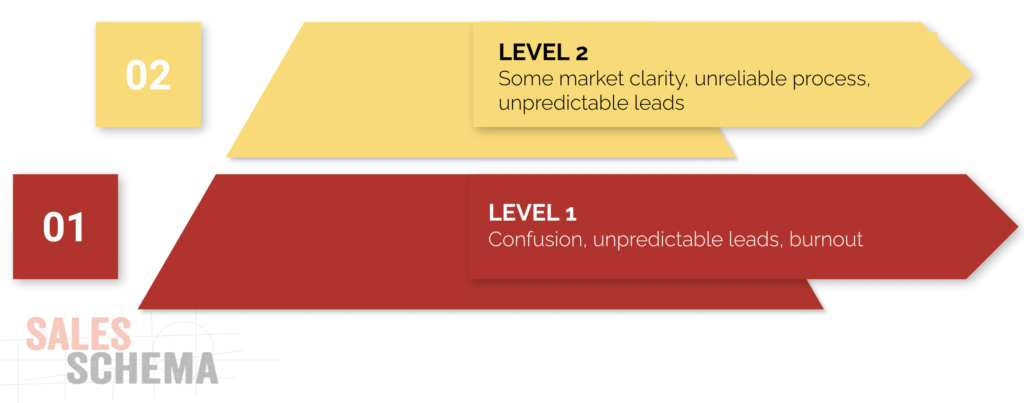
This is an organization that found some success in one-to-a-handful of verticals, and built a profitable business, sometimes over the course of many years.
But at the Meanderer stage, the agency is not in control of their destiny. They tried unsuccessfully many times to build a repeatable business development system, but they gave up or failed due to impatience and confusion. While the organization can survive and profit for years, it faces major barriers because it continues to rely on unpredictable referrals and the owner’s personal network to grow, which carries negative side effects:
As a result of a finite supply of prospects, the Meanderer is constantly tempted to take bad-fit clients or work outside of their wheelhouse, which hurts team morale and culture. It’s next to impossible for the owners to step away from the agency, and while selling the company might be an eventual option, it’s rarely achieved from a position of strength, as owners face lower-than-desired multiples or long earn out periods.
The path out of Level 2 involves clarity, patience, and determination. This is might mean running lean so you can say ‘no’ to bad fit opportunities while prioritizing a repeatable new business process grounded in 1-2 scalable channels – for upmarket agency offerings, our clients see the best results with targeted outreach as a starting point (assuming it’s done right!).
Level 3: The Cruiser
The Cruiser, which represents 20-30% of our client base, is a company that finally achieved clarity and traction. They are well-specialized, and the team understands, on a deep level, who the agency is positioned to help.
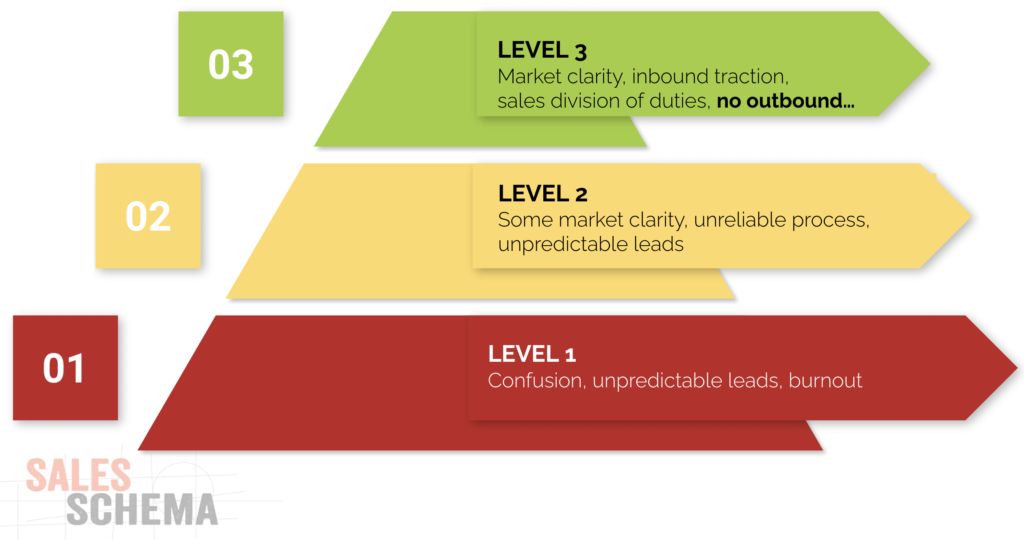
At Level 3, there is some redundancy in the sales team so the owner doesn’t have to do everything, which is made possible by at least one scalable lead channel, like content, ads, or earned media.
The ceiling for The Cruiser agency comes from gaps in team, resources, and know-how. At this stage, growth is stifled by an over-dependence on inbound marketing alone, which makes it difficult for owners to ramp up new salespeople in the face of lower than needed lead volumes. Also Cruisers often face platform risk, since policy changes at companies like LinkedIn or Facebook can turn the company’s revenue on its head.
Breaking through the ceiling at Level 3 happens by going from sales as a part-time hobby to becoming a sales-driven organization. This often means increasing the size or sophistication of the sales team, and making targeted outreach a leg of the table so the company can proactively build new prospect relationships instead of relying exclusively on inbound.
Level 4: The Unfettered
The Unfettered, which represents less than 10% of our clients, are owners who built an asset that’s an engine for achieving their mission and dreams.
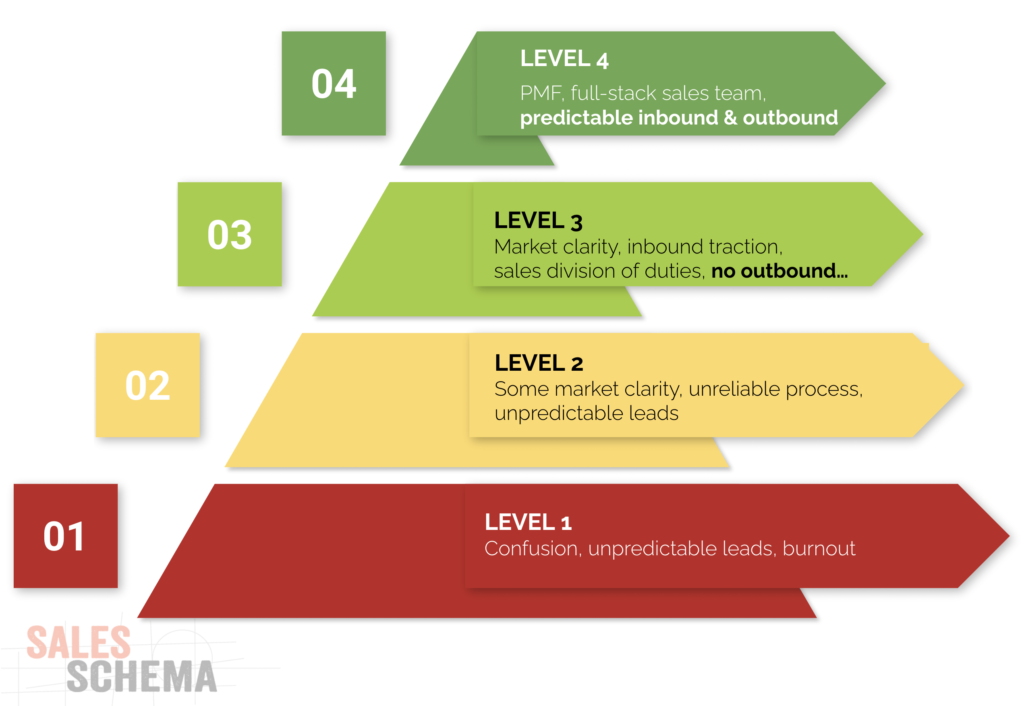
The organization enjoys a high level of clarity and redundancy when it comes to business development, and they have a diversified, inbound and outbound-based sales system that’s close to predictable. As a result, the owner is involved in the sales process as they so choose, be it at a late stage or not at all. All of this fuels opportunities for unbounded creativity and enjoyment, since the agency only works with clients they hand select.
Unfettered owners enjoy freedom and flexibility to do the work they love. They might continue to scale their companies, or they might choose to take sabbaticals, sell out and retire, pursue a social cause, or empower a leadership organization to run the show.
In conclusion:
The above is a mimetic model that will set your agency on a healthier path than the typical “keeping up with the Jones’” temptations, which look like status chasing via arbitrary revenue targets, team expansion, awards, and other shiny objects.
It’s not about comparison avoidance, since that’s impossible, but more about making a deliberate and conscientious selection of mimetic models, in business and life. Strive to mirror those organizations that built strong foundations, nurtured reliable business development strategies, and achieved a level of independence that empowers them to single-mindedly chase their unique goals. The grand plan is to shape a business that serves you.



